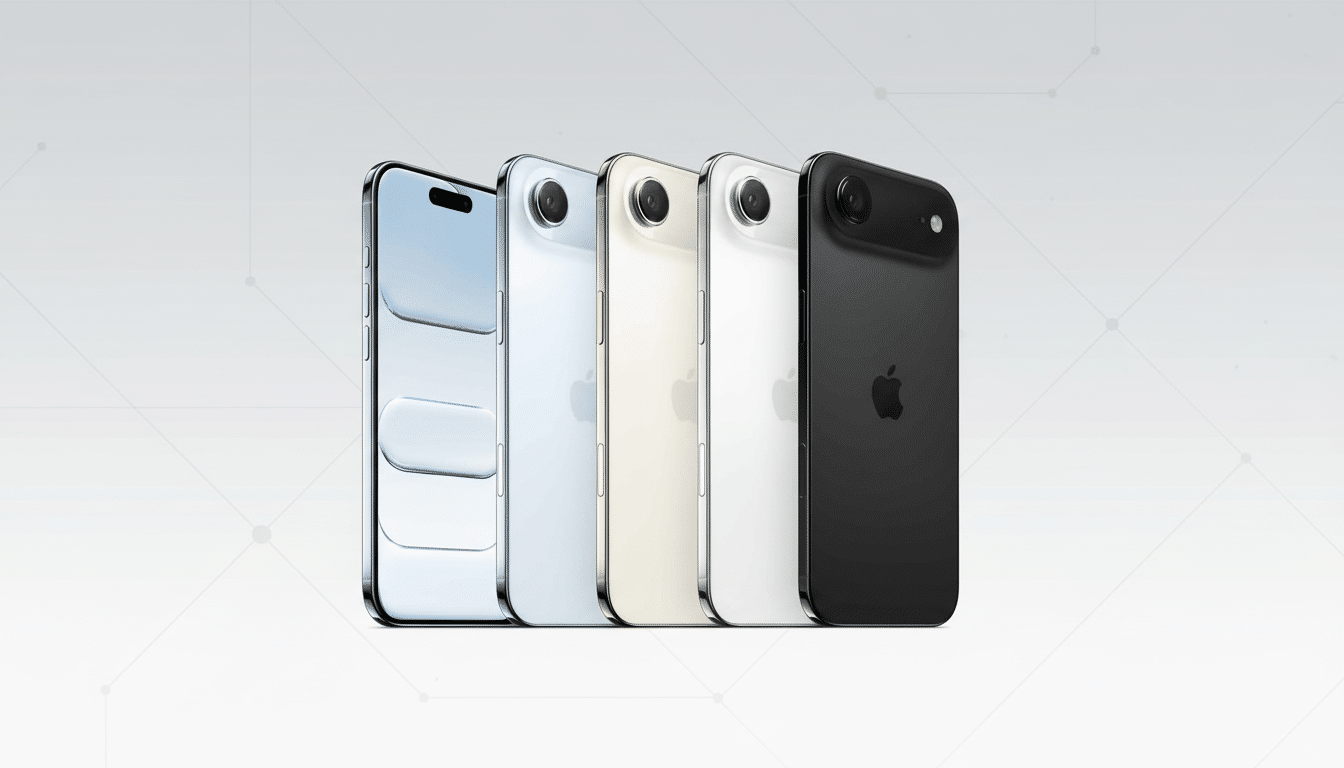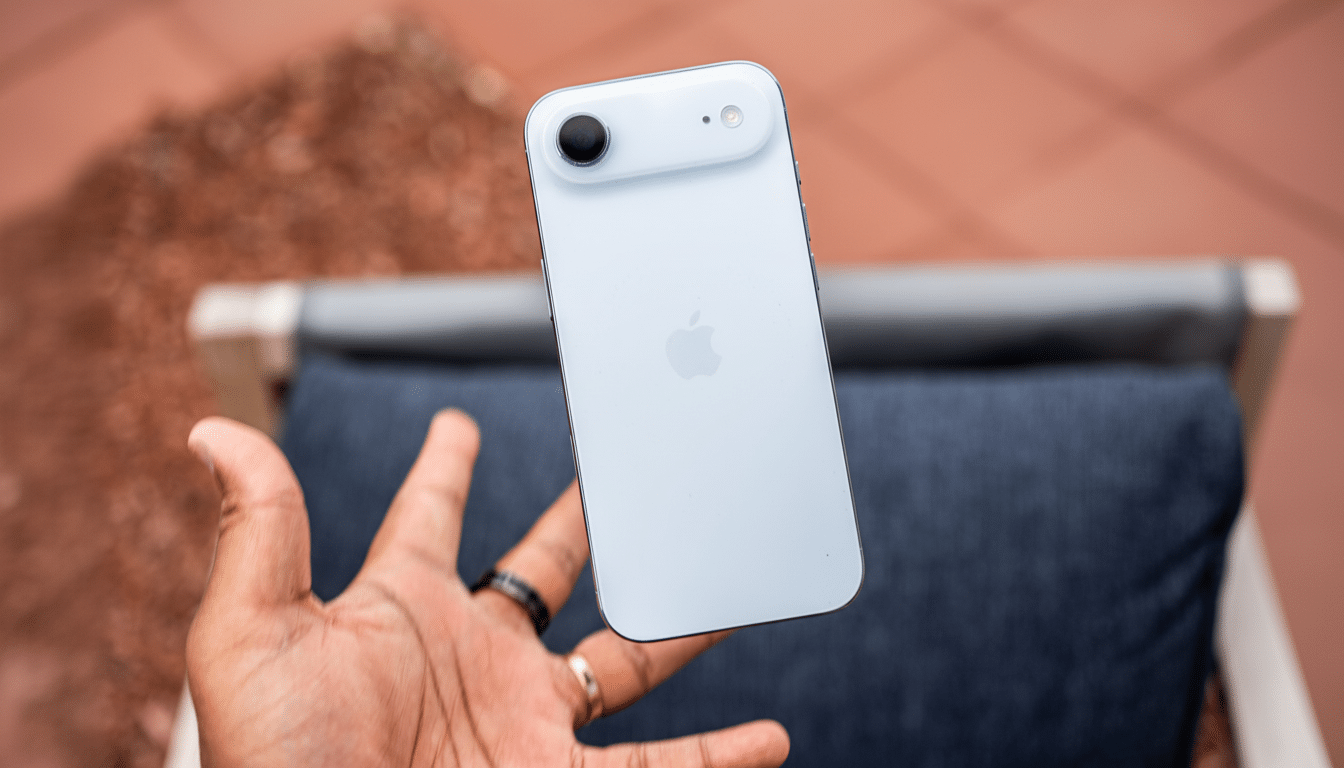I kept patting my jeans because I knew the phone had slipped out. It hadn’t. The iPhone Air is light and thin to the point of weightlessness—where its lack of heft becomes a thing you feel. At 5.64 millimeters and around a dozen grams lighter than the iPhone 17, Apple’s slimmest smartphone changes what it means to be your “daily carry.” The true question is if the joy of near-weightlessness is worth it compared to all of the ways you have to tweak your lifestyle in order to get there.
Featherweight build with a surprisingly solid, secure feel
The Air isn’t minuscule; it’s a 6.5-inch phone. What is different, though, is how this feels in the hand and pocket. That ultra-thin side profile better conforms to your fingers as you’re wrapping them around the sides, which improves grip even if one-handed manageability remains unchanged. In pockets, it slips in flat and goes away — no struggling past denim, no front-pocket bulge.
- Featherweight build with a surprisingly solid, secure feel
- Battery life and device heat are the big trade-offs
- One camera that punches above its weight for daily shots
- Audio limitations and accessories that suit the Air
- Where the Air fits in Apple’s current iPhone lineup
- Bottom line: who the iPhone Air is for—and who it isn’t

The frame of the phone feels reassuringly stiff, despite how dainty it is. (An inadvertent sit-down on a couch didn’t bow the chassis, and I nudged mine off a bedside table with nary a scar.) Wafer-thin devices can be a bit tetchy around twisting, as every durability test under the sun by independent reviewers has shown, but my clumsy elbows haven’t made a dent in this design. If, however, you’re OK going caseless for a breeze-ridden minute or two, this bumper is a sensible middle ground — one that maintains the Air’s party trick with just enough security thrown in for those who might occasionally prove to be butter-fingered.
Battery life and device heat are the big trade-offs
Shoving everything into an extremely thin envelope means less room for battery and cooling. Warmth accumulates around the camera plate during prolonged gaming or hours-long video binges, and you’ll find yourself keeping an eye on that percentage more closely than you’d prefer. The Air makes it through a typical day for medium users on Wi‑Fi and mixed tasks — calls, messages, social media (fewer short videos). I saw a reasonable hit on a two-hour flight with a downloaded movie, but road-warrior use will reveal limits sooner.
If you’ll be glued to the screen most of the time, Apple’s $99 MagSafe battery pack is still the best safety net. It snaps onto the Air’s back with a reassuring hold, charges quickly, and can also juice AirPods or any MagSafe-compatible accessory in a jam. Note that lithium-ion chemistry ages no matter what — indeed, even Apple’s own information says an iPhone battery will still have up to 80% of full capacity after 500 complete charge cycles. The lighter the phone, the sooner you’ll feel that drop if you push it every day.
One camera that punches above its weight for daily shots
The back system is refreshingly stripped down: a single 48-megapixel, f/1.6, 26mm camera with sensor‑shift stabilization. In good light, detail holds up well, and Apple’s computational pipeline ensures that subjects remain crisply delineated. A 2x crop from the main sensor serves for a telephoto, and in daylight surprisingly does just fine. In low light or inside, that digital zoom shows its limitations — particularly if you’re attempting to photograph a pet mid-antics from across the room.

I did notice that Apple’s processing sometimes aggressively brightens backgrounds beyond what your eyes behold before taking the photo, an old trade-off that makes for flattering, social-ready photos but can also appear a smidge surreal. There’s no ultrawide — a loss for travelers and architecture shooters. Up front, the new square 18-megapixel selfie sensor is clever. It allows you to shoot in multiple aspect ratios without needing to flip the phone. With Center Stage automatically reframing the shot as more people gather around, it’s easy to get a clean group shot without choreography.
Audio limitations and accessories that suit the Air
An odd concession: the Air has only one top speaker. It’s clear enough for calls and voice notes, but stereo separation isn’t there for movies and games. If you already live in earbuds — AirPods or not — you won’t mind. If not, put this down as a significant downgrade from dual-speaker iPhones.
Apple’s ultra-minimal shoulder strap system is a cheeky nod to portability, but most people will want either just a slim bumper or no case at all in order to save the silhouette. The good news: Even with a light case, the Air still feels ridiculously less obtrusive than most big-screen phones.
Where the Air fits in Apple’s current iPhone lineup
The Air now takes up the fourth point in the Plus and Mini box. Not the micro-fan’s fantasy, not the battery brute; it’s the design-forward pick. Market trackers like IDC have also pointed out that 6.5‑inch‑plus displays are shipping in higher volumes, but weight has grown year over year. Apple’s contribution to that counterpoint is to keep the screen while stripping out the bulk, which also syncs with Apple’s environmental reports about material reductions per device.
Bottom line: who the iPhone Air is for—and who it isn’t
The age of the iPhone Air is a vibe — but also a utility. It feels like nothing else in Apple’s lineup if you value comfort, pocketability, and an almost invisible carry. You trade in less battery safety, a single rear lens, and mono audio for real lightness. For commuters, folks on their feet all day, or, at heart, anyone weary of a phone that feels like a second wallet, the Air presents a compelling case. Users who need all-day stamina and a multi-lens rig still have great options elsewhere in the family. For everyone else, this is the iPhone that gets out of the way.

